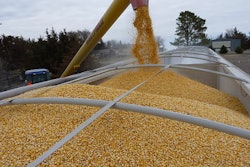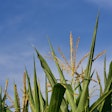
When one country is considering importing grain from another, the list of concerns and coordination can be long. Rising to the top of the list is often the threat – perceived or real -- of importing new pathogens and pests from the exporting country.
This scenario played out last week when a team of Australian government officials visited six states and the District of Columbia to better understand the U.S. corn and sorghum value chains, from farm to elevator to port.
“Australian officials considering U.S. corn and sorghum imports wanted to see the system firsthand to gain confidence in our products,” says Reece Cannady, USGC manager of global trade, who escorted the team. “They were concerned about certain pathogens and pests not present in Australia that could be introduced through imported grains.”
To balance these concerns, the Council led the team in meetings with officials from the U.S. Department of Agriculture’s (USDA’s) Animal and Plant Health Inspection Service (APHIS) and Plant Protection and Quarantine (PPQ) program in Washington, D.C. where the team received an overview of the U.S. grains transportation system before heading to the Midwest to discuss U.S. identity preservation (IP) procedures.
While in Missouri, the team visited a river terminal to understand the logistics of barge and rail loading and observed modern farming practices, on-farm storage and pest management methods practiced by producers. The team then traveled to a grain inspection lab in Kansas, toured a grain elevator connected to a rail line and spoke with corn and sorghum officials about this year’s crop quality.
Finally, the team paid a visit to the Federal Grain Inspection Service (FGIS) office outside New Orleans where they heard from a specialist on the prevalence of the grain diseases of most concern before ending their time in the U.S. visiting two export terminals along the Texas Gulf Coast.
“The U.S. export system provides many IP techniques that help quarantine these pathogens and pests – like Peronosclerospora sorghi, Sporisorium cruentum and Tilletia indica – the ones they were most concerned about,” Cannady said. “Our goal was to convince these officials these pests are managed to an acceptably low level, so we highlighted techniques used to manage them and showed how successful that is, which should allow the officials to make informed decisions about purchasing U.S. grains.”
For more information, visit USGC.

















